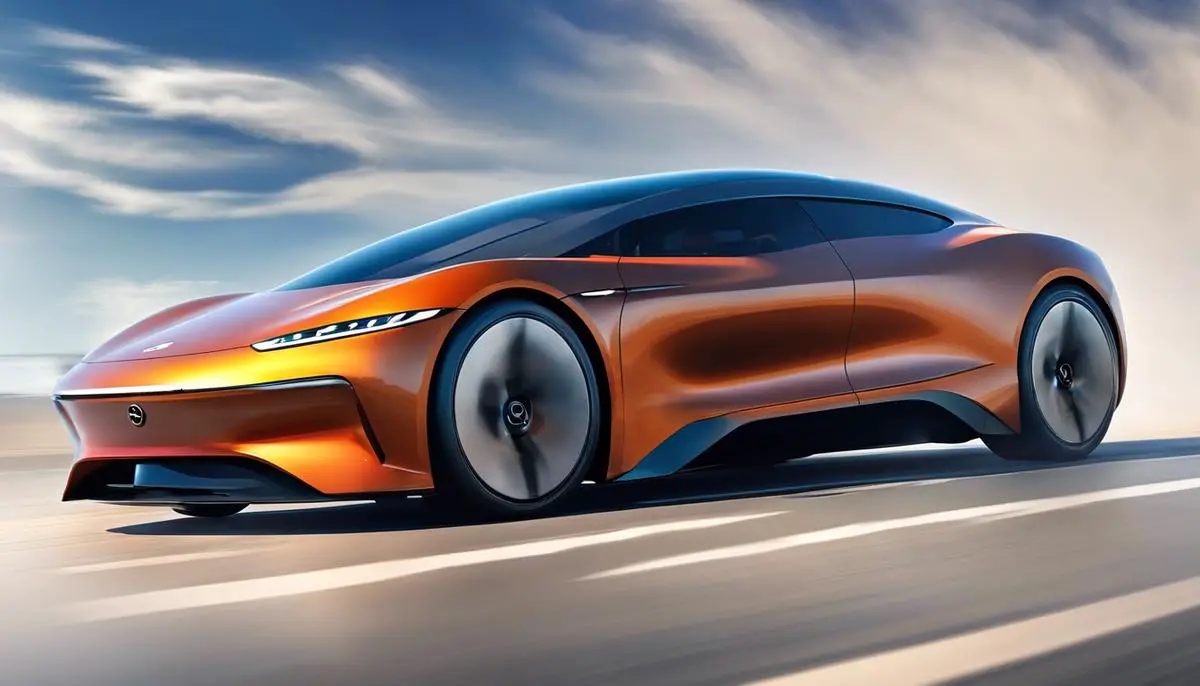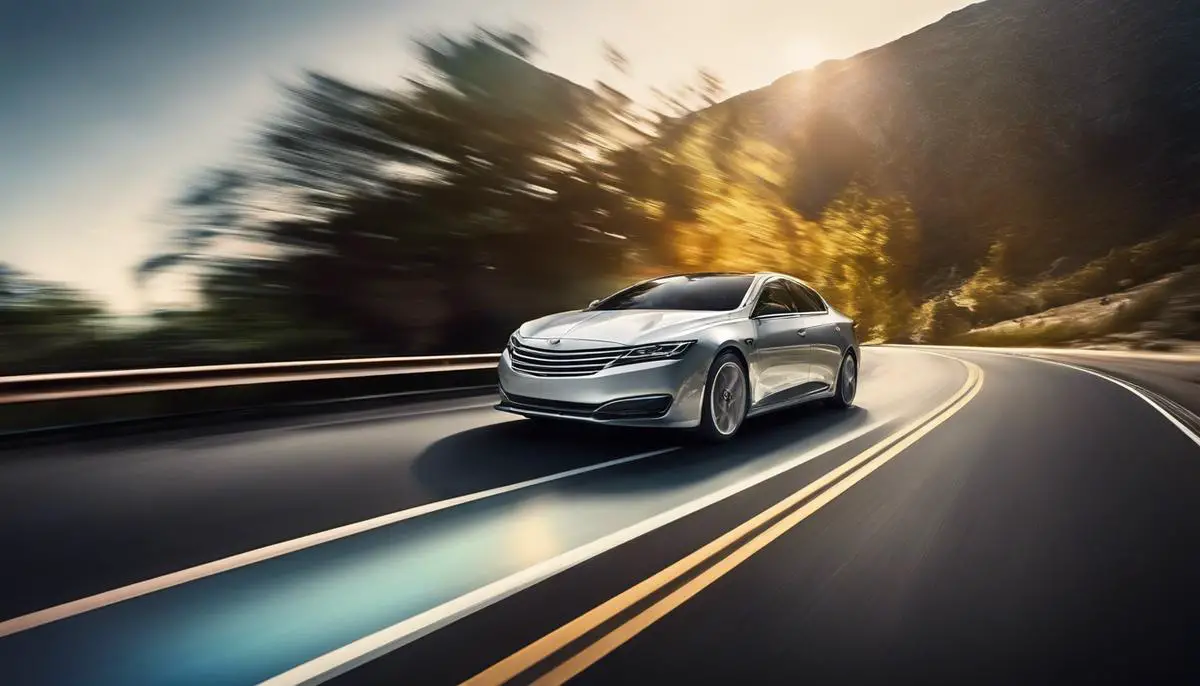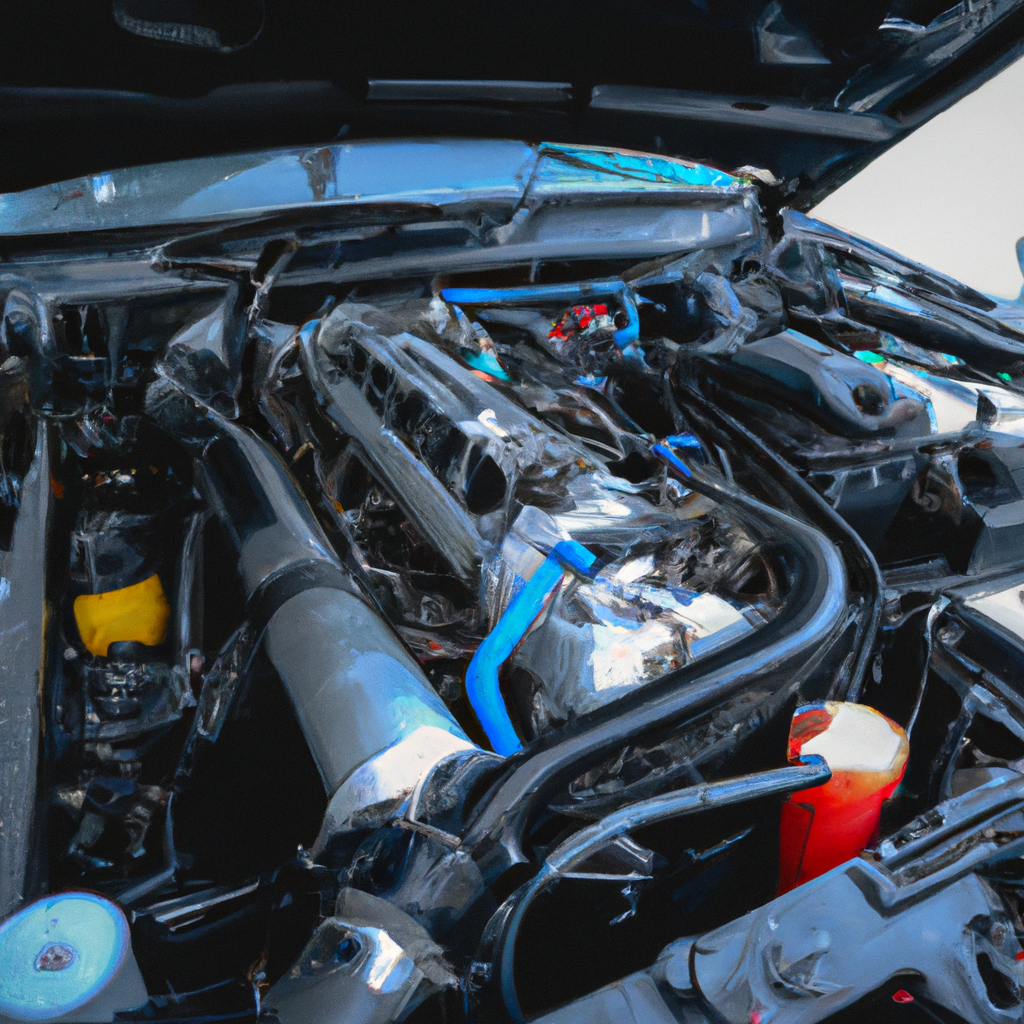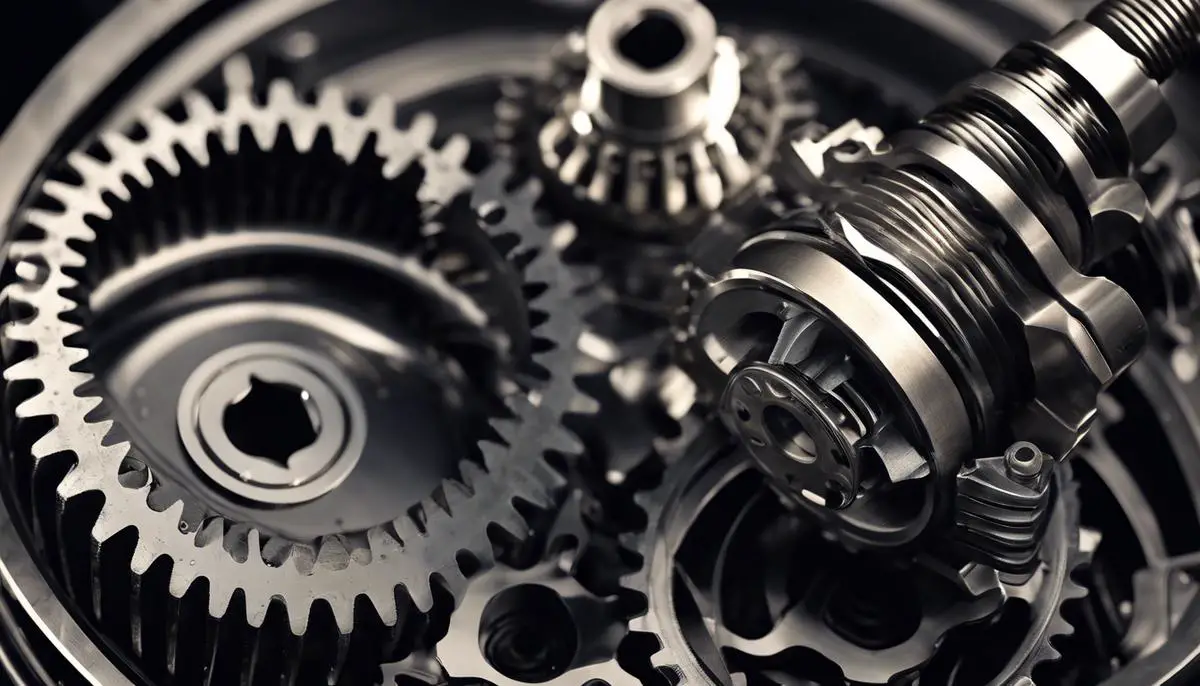In our quest for sustainable and cost-effective modes of transportation, understanding the relationship between aerodynamics and fuel efficiency is paramount. Grasping the fundamental laws of physics that bind these concepts together casts a new light on our approach to vehicle design and energy consumption. This exploration is not confined to the realm of theoretical physics but has indelible impacts on our day-to-day life, shaping the vehicles we drive and the eventual strain on our pockets and the environment. From cars to airplanes, and traditional petrol engines to electric powertrains, the role of aerodynamics covers a broad spectrum of considerations, each of which this discourse aims to elucidate.
Contents
The Physics of Aerodynamics and Fuel Efficiency
“Marvels of Aerodynamics: The Key to Optimizing Fuel Efficiency”
In the wide world of automotive hobbies, wherein we delight in engrossing ourselves with the intricate workings of engines, the roar of a fine-tuned machine, and the thrill of speed, there’s a significant scientific aspect not to be overlooked: aerodynamics. Yes, you read right; the rather elusive concept of aerodynamics plays an instrumental role in your vehicle’s fuel efficiency. To put it in the simplest way possible, it can be said that mastering the science of aerodynamics brings us a step closer to achieving improved frugality on the fuel front.
Diving right in, let’s start with the basics. Aerodynamics, in its essence, is all about how air flows around objects – in our case, around the automobiles. It’s the study of forces generated by the interaction of air with the automotive body. Now, where does the fuel efficiency part come in? It’s all about the fascinating phenomenon of drag.
Air resistance or drag is a significant nemesis to an automobile’s movement, constantly pushing back against the vehicle as it advances. The hard truth is, the more a vehicle has to fight against this resistance, the more fuel it consumes. By improving a vehicle’s aerodynamics, the fight against air resistance can be minimized, decreasing the amount of required energy (aka fuel) to propel the car forward.
Consider this: a vehicle with a poorly designed aerodynamic shape could work against the airflow, resulting in a higher drag coefficient. More energy will be used to overcome this drag, leading to higher fuel consumption. Conversely, a vehicle designed with aerodynamics at the helm will effectively slice through the air, thereby reducing the drag and subsequently the fuel usage.
To bring this to life, let’s spotlight race cars. These vehicles with their sleek, minimalist design are the epitome of an aerodynamic vehicle. Their well-sculpted shape allows them to glide through the air with minimum resistance. This design isn’t just for speed, it bolsters fuel efficiency too under normal driving conditions.
But don’t get inclined to think that this science is reserved only for high-speed racing machines! Everyday cars also stand to gain from enhanced aerodynamics, with many manufacturers focusing on more streamlined shapes, smaller grilles, underbody trays, and other smart modifications to counterbalance the drag factor. Even small changes can reap a considerable enhancement in reducing air resistance and fuel usage.
So, the link is clear: a profound understanding of aerodynamics can unlock the secrets to better fuel economy. With all the speed and power of automotive performance that enthusiasts love, the understated influence of aerodynamics is the unseen hand guiding the efficiency of these remarkable machines. Whether you’re engaged in a pursuit of speed or the art of preserving fuel, remember aerodynamics is your trusty ally. Remember, every drop of fuel saved is a victory achieved!

How Car Designs Optimize for Aerodynamics
Let’s continue peering into the intriguing role of aerodynamics on fuel efficiency, shall we? As a devoted motorhead, you’ve likely admired the sleek, futuristic designs of high-end sports cars. Strikingly, those curvaceous exteriors serve a purpose beyond their aesthetic appeal: they’re fine-tuned implementations of aerodynamic principles.
The marvel of modern technology allows engineers to meticulously study, simulate, and optimize vehicle design for optimum aerodynamics. Tools, such as Computational Fluid Dynamics (CFD), facilitate the visualization of airflow around a vehicle design, establishing areas of high air resistance or turbulences. This data-led decision making can significantly reduce drag and cognitively enhance fuel efficiency.
You’ve probably noticed the trend of vehicles with sleek, curved surfaces. That’s not a coincidence – curved surfaces encourage smoother air flow, leading to less air resistance. Take the Volkswagen XL1, for instance, boasting an impressive Drag Coefficient (Cd) of 0.189 due in part to its teardrop-shaped body. This, connected with other energy-saving tech, allows it to achieve a mind-boggling fuel efficiency of about 260 miles per gallon!
Ground clearance, too, plays a surprisingly large role in a vehicle’s aerodynamics. A car sitting high off the ground allows more air to move underneath, causing additional wind resistance. To counteract this, many industries are pursuing designs that reduce ground clearance, enhancing aerodynamic efficiency on the highway. The Tesla Model S is a notable example, employing an adaptive air suspension technology. This enables the car to automatically lower itself at high speeds, effectively reducing aerodynamic drag and feasibly upping fuel efficiency.
Then there’s active aerodynamics – a dynamic-worthy feature in the field of fuel-efficient vehicle design. Active aerodynamics systems allow alterations in the vehicle’s shape or surfaces as it moves, typically through movable spoilers, louvers, or air flaps. These changes are designed to adapt to different conditions and speeds, predominantly reducing drag or increasing downforce when required. This smart shaping, as seen in the Porsche 911, can consequently help augment fuel efficiency.
Grilled about grilles? Their primary function is to let air into the engine bay for cooling, but they are decidedly an aerodynamic compromise. Newer car models are adopting active grille shutters that remain open during low-speed driving but automatically close on the highway, preventing air from entering the engine bay and reducing drag.
Finally, the role of tires in aerodynamics is also noteworthy. Wider tires create more surface area and consequence more aerodynamic drag. While one can’t ignore their benefits in terms of grip and performance, a balance has to be struck. Streamlining the wheel arches or covering them, similar to the iconic Volkswagen Beetle, can contribute towards minimizing side air turbulence and maintaining aerodynamic efficiency.
Aerodynamics, self-evidently, is not merely a tool for motor-racing or a wand to make our everyday cars look ‘cool’; it’s a crucial piece in the perpetual quest for elevated fuel efficiency. The more we comprehend how air resistance affects a car’s performance, the more we can nurture our passion for automobiles without squandering resources. This enhances the whole driving experience, reinforcing the symbiosis between our vehicles and the environment. Drive safe, drive smart, and remember to keep those wheels well inflated!

The impact of Aerodynamics on Electric Cars
Delving into the world of electric cars, it’s clear that aerodynamics plays a crucial role not just in a vehicle’s speed and performance, but also in fuel efficiency. As the green future shines brighter with the advent of electric cars, the part aerodynamics play in extending the range per charge, thereby improving the fuel efficiency, is simply too significant to overlook.
Consider Computational Fluid Dynamics (CFD), a tool used in studying vehicle designs for optimal aerodynamics. By simulating the interaction of air with the vehicle’s exterior, designers can anticipate changes in pressure and flow directions. This information can help shape more aerodynamically efficient designs, thereby potentially increasing the electric vehicle’s range by minimizing resistance.
Curved surfaces and ground clearance also play a big part in aerodynamics. Well-designed, smoothly contoured vehicle bodies, like that of the Volkswagen XL1, for example, can direct the airflow smoothly around the vehicle, reducing air friction or the so-called aerodynamic drag. Similarly, smaller ground clearance can contribute to lower drag; however, factors like road usability and safety need to be considered.
An interesting exploration of this practicality versus efficiency balancing act is the Tesla Model S. It utilizes adaptive air suspension technology, which reduces the ground clearance at high speeds for improved aerodynamics while offering more significant clearance for practical purposes at lower speeds.
Moreover, the concept of active aerodynamics has started to reshape electric car designs for better fuel efficiency. Systems that can adapt and respond to changing conditions are the way of the future. Take active grille shutters, for instance. They close at high speeds to reduce aerodynamic drag but open when more cooling is required. This type of dynamic design is helping to enhance fuel efficiency.
Even features like tires can influence aerodynamics. While they need an excellent grip on the road, that very surface friction or drag can impact fuel efficiency. Thus, tire design is another tightrope car manufacturers must walk in designing for aerodynamic efficiency.
All these aspects, from CFD to active aerodynamics, underline the importance of imbuing electric vehicles with efficient aerodynamic properties. It’s a complex, multidimensional jigsaw puzzle where every piece makes a difference. Ultimately, the quest for efficiency through understanding and improving aerodynamics not only leads to extended ranges and better fuel efficiency but also boosts the broader goal of environmental sustainability. As we embrace a greener future with electric vehicles, the understanding and application of aerodynamics become even more vital than ever before.

Aerodynamics and Fuel Efficiency of Aircrafts
Switching gears, let’s take a look at the world of aviation – where aerodynamics plays an even crucial role in fuel efficiency. Considering buzzwords like airliners, jumbo jets and space shuttles, most of us might scarcely think of fuel consumption and aerodynamics. However, one should understand that the principles of aerodynamics lend a huge hand to how efficiently aircraft can glide through the skies.
Just like automobiles, aircraft have to contend with drag, the two main types being parasite drag and induced drag. While parasite drag involves elements such as form drag (resistance from the shape of the aircraft itself), and skin friction (resulting from air brushing against the aircraft surface), induced drag is all about the downside of our friend, lift. Lift is wonderful, keeping our planes aloft, but it also causes a vortex of air, especially at the wingtips, which causes drag.
Understanding these forms of drag could lead to designing aircraft in a way that minimizes these effects thereby, enhancing fuel efficiency. Take the shape of the wings, for example. Wing designs such as the Elliptical wing, employed by the iconic Second World War fighter aircraft – The Spitfire, help to reduce induced drag. Another interesting approach is the winglet technology used in modern aircraft. These vertical extensions at the ends of wings decrease the vortices and thus, help to lower fuel consumption.
Then there’s the optimum Fuel-to-Lift ratio. Achieving the perfect balance between the aircraft’s weight (with fuel, passengers, and luggage) and lift (produced by the wings or rotors) aids in efficient consumption of fuel. Working to reduce the overall weight of the aircraft can positively affect this ratio – every little gram counts.
A note-worthy example is the Boeing 787 Dreamliner. Carbon-fiber reinforced polymer composites make up a significant part of the aircraft, rendering it lighter than traditional aluminum counterparts. Paired with fuel-efficient engines such as the Rolls-Royce Trent 1000 or the GE GEnx-1B, the 787 is an epitome of how understanding and applying aerodynamics can yield jaw-dropping fuel savings.
In a nutshell, the field of aerodynamics holds the key to the evolving world of fuel-efficient aircraft. Be it employing state-of-art materials for aircraft building, or tweaking designs to scale down drag, small steps taken in the light of aerodynamics can lead to leaps in fuel efficiency. By pushing the boundaries in this realm, not only can we hope for significant economic benefits in aviation but also work towards the broader goal of sustainable aviation fuel.

The tangible threads connecting aerodynamics and fuel efficiency, once explored and understood, reveal numerous avenues for innovation and improvement. The design choices fueled by these principles not only pave the way for more refined shapes of cars and aircraft but also hold the potential to revolutionize the future of transportation, particularly with electric vehicles. Understanding the dynamic interplay of factors such as speed, weight, and altitude in influencing fuel efficiency modifies our narrative of sustainable transportation. It’s clear that aerodynamics will continue to remain at the helm, influencing design choices and technology advancements across industries, thereby marking a significant stride towards greener, more sustainable mobility solutions.



